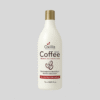
Shopping cart (0)
Subtotal: د.إ0.00
Spend د.إ350.00 to get free shipping
Congratulations! You've got free shipping.
No products in the cart.
Shopping cart (0)
Subtotal: د.إ0.00
Spend د.إ350.00 to get free shipping
Congratulations! You've got free shipping.

More
More





Add comment